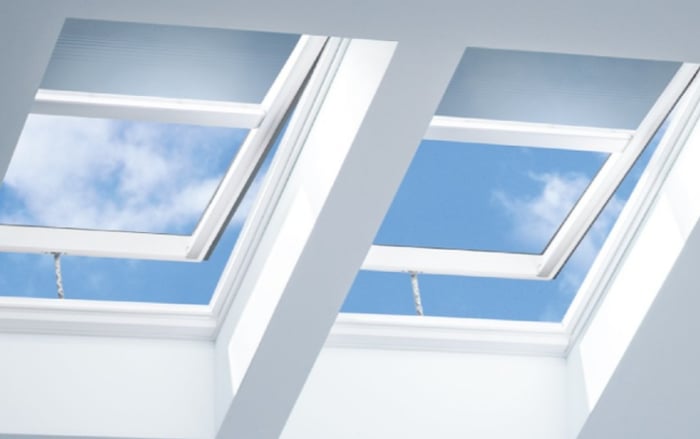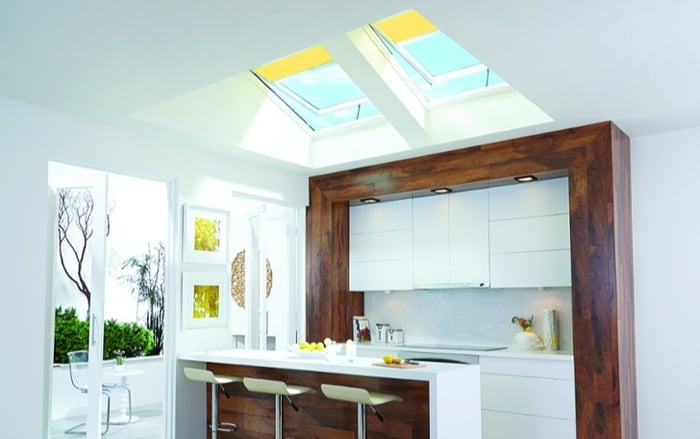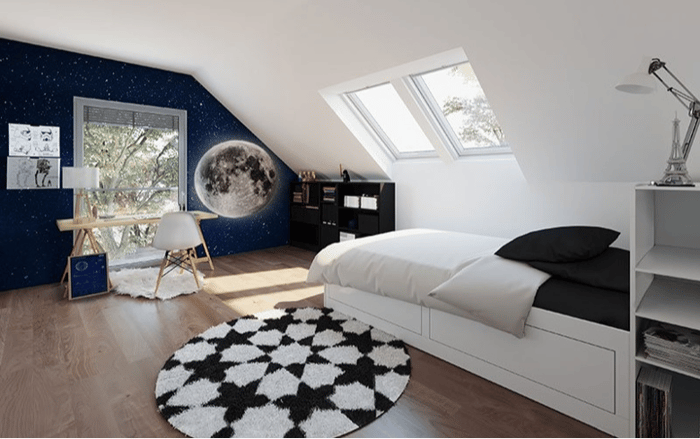5 Expert Tips for a Healthier Living Room
Read Time 3 mins | Written by: VELUX Skylights
.jpg)
Welcome back to another edition of our Expert Tips for a Healthier Home! Today, we're looking at the air quality of your living room.
(Psst: miss the previously posted rooms? Check out our kitchen and bedroom editions!)
Tip #1: Vacuum Regularly
Flooring, especially carpeted flooring, can be a reservoir for chemicals, dirt, and dust. And when your family walks or plays on the carpeting in your living room, those chemicals, dirt, and dust get resuspended throughout the room. Vacuuming regularly can help control this, just be sure to also empty the vacuum bin and replace the filter as needed for optimum cleanliness.
Pro-tip: Opt for a vacuum with a HEPA (High-Efficiency Particulate Air) filter. HEPA filters trap dust particles before they can be released into the air, which helps control levels of dust, settled pollen, and pet allergens.
Tip #2: Don't Smoke Inside
Or at all, really. Firsthand, secondhand, and what we now know as thirdhand smoke (the stuff that comes out of cigarettes and sticks to walls, carpets, and furniture) is extremely hazardous to our health. Smoking indoors isn't as common as it used to be, but smoking on the porch or front stoop doesn't necessarily prevent the smoke infiltrating the house when you go back in.
Pro-tip: While we don't have as much conclusive evidence about secondhand exposure to e-cigarettes and vapes, they have shown to emit toxic chemicals too. So follow a precautionary approach and don't use these inside either.
Tip #3: Limit the Candles and Incense
Limit candles? Say it ain't so! Unfortunately, if you're looking for cleaner air in your living room, it's true you need to limit your use of candles and incense. Candles and incense create small combustions inside your home, and any type of combustion releases particles into the air. Through measuring interior air quality, it's been found that homes with candles or incense burning have a sharp increase in airborne particles in the home.
Pro-tip: Don't toss all of your unused candles out yet. Just limit their time spent burning to about 20 minutes at a time and regularly air out your home to control airborne particles.
Tip #4: Opt for Fewer Harmful Chemicals
You may have already swapped out your household cleaners for more environmentally friendly options, but have you considered the chemicals in your living room's carpet and furniture? The chemicals used for flame retardancy and stain repellency have a long track record of being toxic. And the new guys on the market aren't necessarily safer than past options. If you're able, opt for couches and chairs that meet fire safety standards without the use of chemical flame retardants. And try to find products that offer protection against stains without the use of toxic stain repellent chemicals.
Tip #5: Properly Vent Fireplaces
Fireplaces can pose more than the obvious risks. Did you know that they can affect your air quality, even after the fire's been put out? Like we mentioned with candles earlier, combustions release particles into the air. So, make sure you have a strong draft to suck fire smoke up the chimney and keep the flue open for 12 hours after the fire has gone out to prevent particulates and carbon monoxide from entering your home.
Pro-Tip: You can air out your home faster and more efficiently with skylights and the use of the stack effect. The stack effect happens when you open both skylights and vertical windows: warm, stale air is whisked out through the skylights while cool, fresh air comes through the windows.
VELUX Skylight Systems
Reimagine Your Home With Natural Light and Fresh Air

SKYLIGHT INNOVATIONS
The Different Parts of Your VELUX Solar Powered "Fresh Air" Skylight
Ever wondered what all the parts on your VELUX Solar Powered "Fresh Air" Skylight do? Well, we're he...
Keep Reading
SKYLIGHT INNOVATIONS
The Different Parts of Your VELUX Manual "Fresh Air" Skylight
Ever wondered what all the parts on your VELUX Manual "Fresh Air" Skylight do? Well, we're here to t...
Keep Reading
SKYLIGHT INNOVATIONS
The Different Parts of Your VELUX Fixed Skylight
Ever wondered what all the parts on your VELUX Fixed Skylight do? Well, we're here to tell ya.
Keep Reading